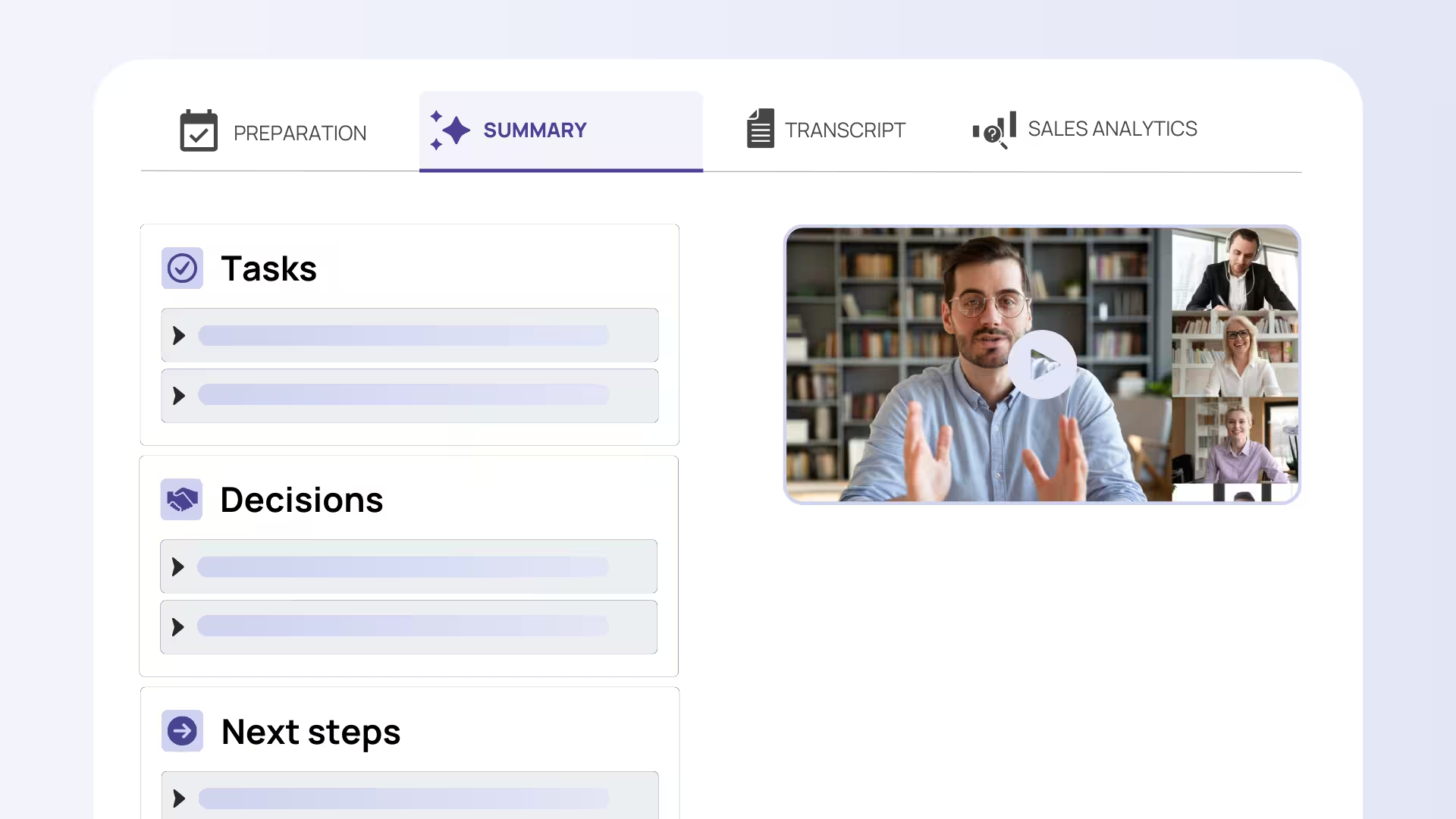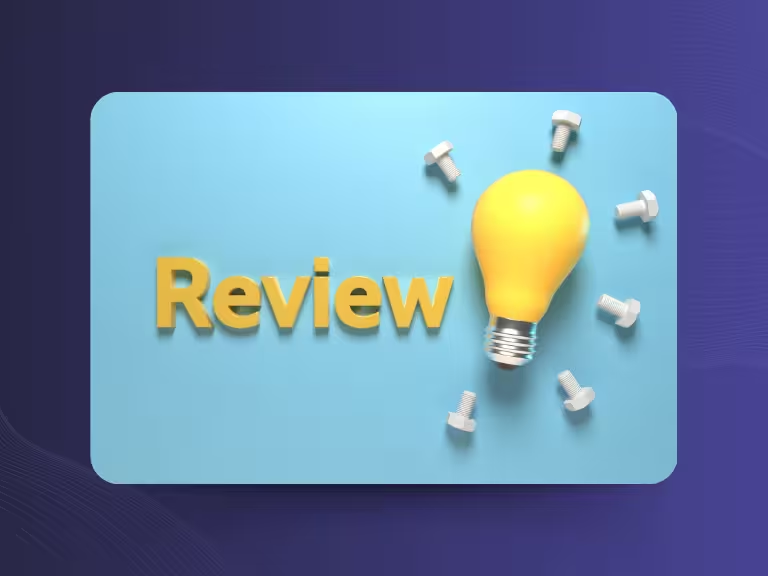Table of Contents
Conducting an effective performance review – this is one of the most demanding tasks of the year for many managers. Yet it's far more than just a tedious obligation. A well-conducted employee evaluation can strengthen teams, boost motivation, and drive each individual's development.
In today's work environment, shaped by remote work, digital tools, and changing expectations, companies face new challenges. How do you evaluate performance fairly and objectively? How do you conduct constructive conversations? And how do you avoid the typical pitfalls?
In this article, you'll learn everything you need for a successful performance review: from the basics to proven methods, current trends, and practical tips from real-world experience.
Performance Review Fundamentals – Definition, Goals and Significance
What is a Performance Review?
A performance review is the systematic evaluation of an employee's work performance based on predetermined criteria. It's not just about numbers and facts, but about creating a holistic picture of performance.
You distinguish between quantitative and qualitative evaluation criteria. Quantitative aspects are measurable: sales figures, project completions, or customer satisfaction percentages. Qualitative characteristics are harder to grasp but equally important: teamwork, communication skills, or problem-solving competence.
For example: A sales employee reaches 120% of their sales targets (quantitative), but regularly works alone and doesn't share knowledge with the team (qualitative). Both aspects flow into the overall evaluation.

Main Goals and Benefits of Performance Reviews
A well-thought-out performance review pursues multiple goals simultaneously. It promotes employee development by highlighting strengths and identifying areas for improvement. At the same time, it boosts motivation because good performance is recognized and valued.
For personnel decisions, it's indispensable. Should someone be promoted? Who needs what kind of training? How should salary adjustments look? The performance review provides the foundation for such decisions.
Furthermore, it strengthens a performance-oriented corporate culture. When employees know their work is seen and fairly evaluated, trust develops. This has a positive impact on team development.
Performance Review as a Corporate Management Tool
Individual performance must be linked to company goals. A performance review shows whether employees are working in the right direction. It's an important component of talent management and helps with strategic personnel planning.
A company can thus recognize early where potential exists and where action is needed. This makes the performance review a valuable leadership tool.
Conducting Performance Reviews – Process, Methods and Important Criteria
Structured Process of a Performance Review
Conducting a professional performance review means following a clear process. Preparation is crucial. You select evaluation criteria, gather concrete examples and performance data. At the same time, employees should reflect on themselves – what went well, where do they see potential for improvement?
The implementation takes place in the performance review meeting. Clear structures and communication rules are important here. The conversation should have sufficient time and take place without interruptions.
Follow-up is often the neglected part. Yet it's equally important: documenting results, following up on feedback, and concrete development planning. Only this way does the review become an instrument of employee development.
Proven Methods and Tools for Performance Reviews
Classic evaluation scales and goal agreements have proven themselves. SMART goals (Specific, Measurable, Achievable, Relevant, Time-bound) or OKR systems (Objectives and Key Results) provide clear orientation.

360-degree feedback offers a holistic view. Not only supervisors evaluate, but also colleagues, employees, and sometimes even customers. This reduces subjective distortions.
Self-assessment promotes personal responsibility. Employees reflect on their own performance and set goals for themselves. This increases acceptance of the evaluation.
Continuous Performance Management is the modern trend. Instead of once a year, there's regular feedback. This is timely, relevant, and less stressful for everyone involved.
Selecting Appropriate Evaluation Criteria
The right criteria are the heart of every performance review. Performance results like goal achievement, work quality, and productivity are usually well measurable. But behavior also counts: How does someone communicate? How do they work in a team? Do they show initiative?
Competency development and willingness to learn are becoming increasingly important. In a rapidly changing work environment, these qualities are often more decisive than current expertise.
Successful Implementation and Avoiding Common Mistakes
Practical Tips for Managers
Thorough preparation is essential. Collect concrete examples – both positive and areas needing improvement. Vague statements like "You work well" don't help anyone.
Active listening and empathetic conversation skills create trust. Let the employee speak and ask open questions. Communicate clearly and understandably, avoid jargon.
Focus on development and the future, not just criticism. Even when improvements are needed, solutions and support should be the focus.
Modern tools can support this. An AI meeting assistant like Sally can record and transcribe performance review conversations. This way you don't miss important points and can focus fully on the conversation.
Common Mistakes and How to Avoid Them
Subjectivity is the biggest enemy of fair evaluation. The halo effect makes us see an employee positively in all areas just because they're outstanding in one area. Sympathy bias leads us to evaluate people we like more favorably.
Insufficient preparation and lack of structure in the conversation are other stumbling blocks. Without a clear roadmap, the conversation becomes superficial or gets lost in details.
Excessive criticism demotivates, while sugarcoating doesn't help. Both extremes damage trust between manager and employee.
Lack of connection to company strategy makes the evaluation worthless. If it's not clear which performance is truly important, meaningful evaluations cannot emerge.
Dealing with Emotional Reactions in Performance Review Meetings
Performance review meetings are emotionally charged. This is normal and human. Acknowledge this psychological dynamic and deal with it professionally.
Create a trustworthy and respectful atmosphere. Choose a neutral space and ensure privacy. When emotions run high, take time and listen.
Managers should be trained in conflict management and emotional intelligence. These are skills that can be learned and that make the difference between a difficult and a constructive conversation.
Innovative Trends and Complementary Perspectives in Performance Reviews
Using Modern Technologies to Support Performance Reviews
HR software solutions are revolutionizing performance reviews. They collect data automatically, analyze it, and create reports. This saves time and reduces errors.
AI-supported tools can help provide more objective evaluations. They analyze large amounts of data and recognize patterns that humans would miss. Automated reporting relieves managers.
Digital platforms enable timely feedback and transparent communication. A tool like Sally can help document important conversations and analyze them later. Recording and transcribing performance review meetings creates clarity for all parties involved.

Cultural Differences and Their Impact on Evaluation
In individualistic cultures, personal performance is the focus. In collectivistic cultures, team performance is more important. These differences must be considered in evaluation.
International and multicultural teams need adapted evaluation processes. What is appreciated as direct feedback in Germany might be perceived as rude in other cultures.
Promoting a Positive and Sustainable Feedback Culture
Feedback should be a continuous dialogue, not just an annual obligation. Regular, short conversations are more effective than rare, long evaluations.
Managers have a role model function. They must demonstrate openness and appreciation. Only this way does a culture emerge where feedback is seen as an opportunity.
Integrating performance reviews into holistic employee development makes them a valuable tool. They become part of career planning and talent management.
Long-term Development and Continuity
Performance reviews must evolve with the company. Markets change, requirements shift. Evaluation methods must remain flexible.
Regular adaptation of methods to company and market changes is important. What works today might be outdated tomorrow.
Monitoring effectiveness helps with process improvement. Employee surveys and success controls show whether the evaluation is achieving its goals.
Conclusion and Summary
Conducting a performance review is more than an annual mandatory task. It's a powerful tool for employee development, motivation, and corporate management. The key lies in combining proven methods with modern technologies.
Important is the consideration of cultural, psychological, and technological aspects. An open feedback culture forms the foundation for sustainable success. Structured preparation, clear communication, and focus on development rather than just evaluation make the difference.
Digitalization offers new possibilities. Tools like Sally can help document conversations and capture important information. But technology never replaces the human component – it only supports it.
Ultimately, a successful performance review is a conversation between people. It's about trust, respect, and shared goals. If you follow these principles and implement the practical tips, your next employee evaluation will be a positive experience for both you and your team.
Additional Resources
For practical implementation, it's recommended to use structured checklists and templates. Modern software tools like Sally can significantly ease the documentation and analysis of performance reviews by automatically transcribing conversations and highlighting important insights.
Invest in training your managers. Workshops on conversation skills, conflict management, and emotional intelligence pay off in the long run. A well-conducted performance review is an investment in your company's future.

Try meeting transcription now!
Experience how effortless meeting notes can be – try Sally free for 4 weeks.
Test NowOr: Arrange a Demo Appointment

.avif)



